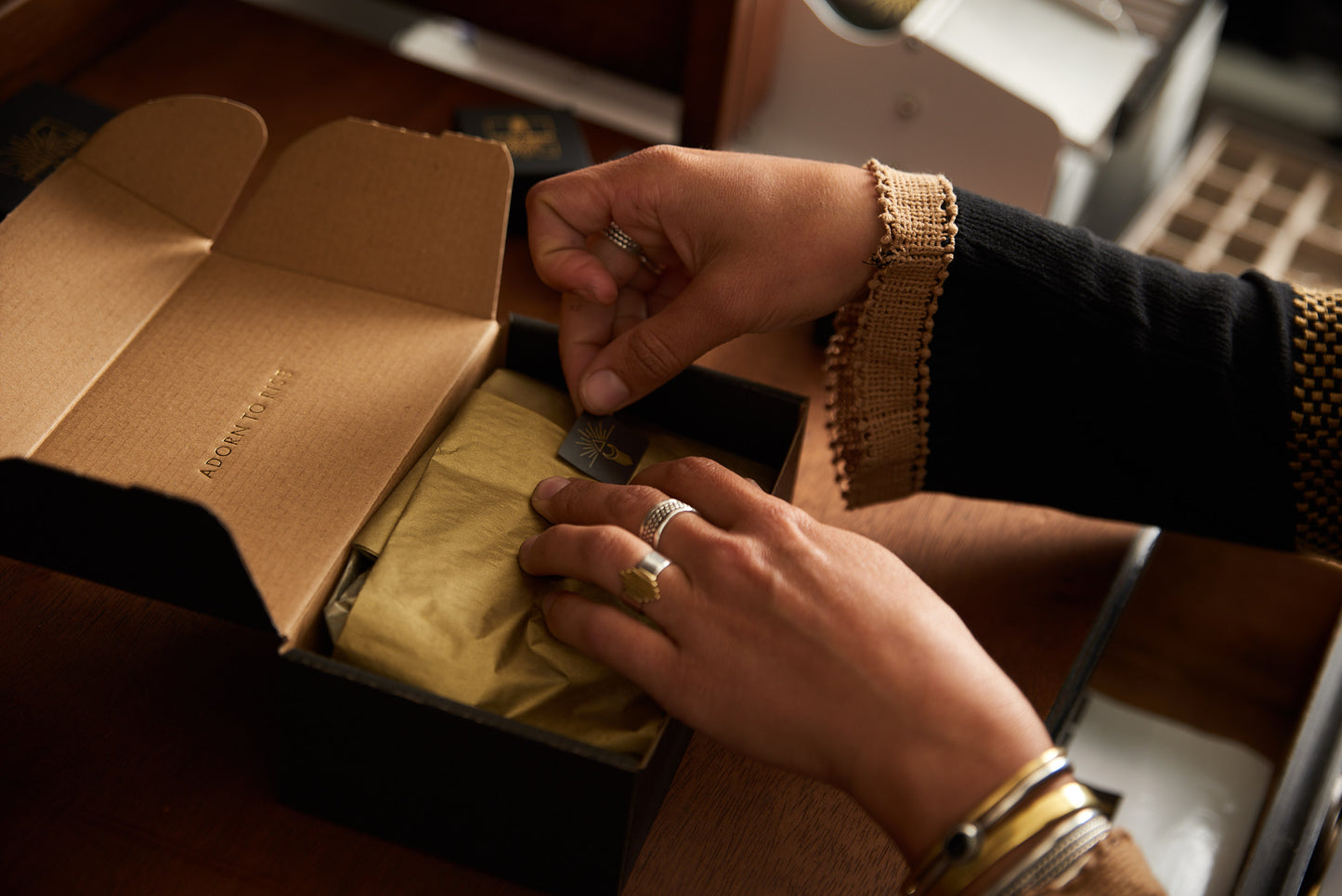What is a Karat and What's the Right Gold Alloy to Buy?
Pure Gold and its Alloys
24k gold is 100% pure gold. But since gold is so soft, 24k gold jewelry is pretty impractical for everyday wear. Thus, other metals are mixed in to pure gold to make gold alloys with varying gold content and varying degrees of hardness.
The amount of gold content in the alloy is indicated by a karat (24k, 22k, 18k, 14k, 10k, etc.) Think of a karat as a fraction out of 24 parts. If 24 karat is 100% pure gold, it contains 24 parts out of 24 parts of gold. 18k contains 18 parts out of 24 parts of gold. 14k contains 14 out of 24 parts of gold. The lower the karat the less gold is in the alloy and but the harder the metal is.
A karat is not to be confused with a carat! Although pronounced the same and derived from the same word, a carat, when applied to gemstones, is a unit of measurement to indicate the weight of a gemstone like a diamond. A karat, when applied to gold, indicates the percentage of gold content rather than the weight. To be especially confusing the spelling of carat with a "c" is sometimes used in conjunction with gold alloys but regardless of spelling (karat or carat) when applied to gold it indicates the percentage of gold in the alloy.
14k Gold vs. 18k Gold Jewelry: What Sets Them Apart?
When it comes to buying gold jewelry, two of the most popular choices are 14k gold and 18k gold. That is because they have a high enough gold content to be considered desirable without being too soft to wear like 24k and 22k. Once you get into alloys under 14k you are buying gold alloys that contain less than half pure gold which can practical for lower budgets or for very thin ring bands that need the extra strength. For the purpose of this article, I'll be talking about 14k and 18k since that's what I sell in the shop and since they are the most popular options.
When deciding between 14k and 18k the difference in their gold content and composition influences their appearance, durability, and price. So let's discover the difference:
1. Gold Content:
2. Color:
|  |
|  |
3. Durability:
- 14k Gold: The presence of alloy metals makes 14k gold more robust and resistant to wear and tear. It's less prone to scratching and denting, which makes it an excellent choice for everyday jewelry, such as engagement rings and wedding bands.
- 18k Gold: While 18k gold is more pure and has a softer, more malleable nature, it is slightly less durable than 14k gold but still durable enough to wear daily. It is more prone to surface scratches and dings, making it better suited for pieces that receive gentler treatment, such as earrings and pendants, or rings with thicker bands.
4. Price:
- 14k Gold: 14k gold is generally more affordable than 18k gold because it contains a lower percentage of pure gold. This makes it an excellent choice for those looking for quality jewelry without the premium price tag.
- 18k Gold: 18k gold is considered more luxurious and, consequently, more expensive due to its higher gold content. It's a choice for those who value the richness of color and are willing to invest in fine jewelry.
The choice between 14k and 18k gold jewelry depends on your personal color preference, budget, and how you intend to wear the piece. If you desire a more affordable and durable option with a slightly lighter and rosier gold color, 14k gold is an excellent choice. On the other hand, if you prioritize the yellowy gold richness of color and are willing to invest in a softer, more pure gold option, 18k gold might be the better fit for you.
See if you can tell the difference between 14k and 18k gold by checking out the selection of gold jewelry in the shop.







